The international market of electrical power primarily consists of two main frequencies: 50 Hz and 60 Hz. Each of them has its own remarkable background, uses, and impacts on technology and infrastructure. But what is 50 Hz’s remarkable trait, and why does it become the favorite of many? This article examines the advantages of 50 Hz power systems in contrast to their 60 Hz equivalents, as well as their coexistence in terms of energy efficiency, compatibility, and cost. So, whether you are an engineer, a tech geek, or just curious about the power grid’s world, this complete guide will enlighten you about the main differences and benefits of these systems, leading to a better understanding of the electricity foundation we have today. Do not miss as we expose the science and tactics behind these frequencies.
Introduction to Frequency
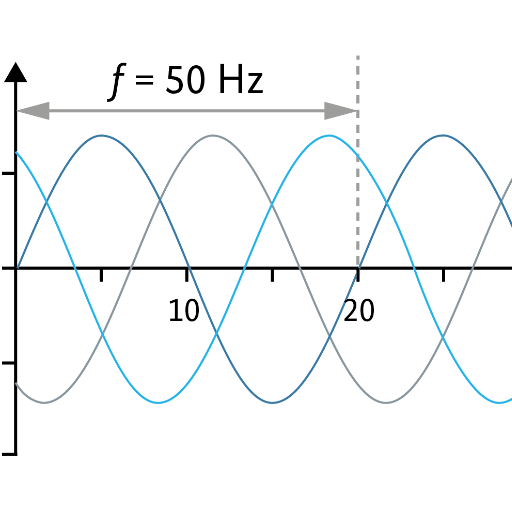
Frequency in electrical systems refers to the rate of change of direction of alternating current (AC) per second, with the unit of measurement being Hertz (Hz). It is the characteristic that all electrical systems and devices using it share. The standard frequencies used are 50 Hz, primarily in Europe, and 60 Hz, mainly in America. The choice between them is made according to the region’s culture and infrastructure. Besides, the qualities of these frequencies determine the design of electrical appliances, compatibility, and efficiency in power networks. Notably, the frequency must be understood because it plays a part in the performance and reliability of electric power supply systems worldwide.
What is Frequency?
The number of cycles a wave completes in one second is called hertz (Hz), and this is how frequency is measured. For electrical systems, frequency is a crucial factor that determines the number of oscillations of the alternating current (AC) wave. Fifty Hz and Sixty Hz are the only two frequencies that dominate the world map, with regions such as Europe and Asia mainly using 50 Hz, while the U. S. and some countries, plus Puerto Rico, have 60 Hz. The reasons for these disparities are largely historical; the technological processes applied for power generation and transmission have also been determined by the respective frequency employed from the onset and up to the present. In the end, the quality of electrical supply and reliability amongst the customers is directly linked to the effective management of frequency in power grids. Moreover, advancements in technology and grid management techniques consistently target frequency regulation points to absorb more benefits from energy efficiency and renewable power sources.
Understanding Hz Frequencies
The Hertz (Hz) unit of measurement of frequency refers to the number of cycles occurring per second in alternating current (AC) systems. Primarily, the standard frequency is determined by location, so 50 Hz is often found in Europe, Asia, and Africa, and 60 Hz in the Americas. These differences in electricity supply standards not only lead to varying configurations of electrical networks but also result in regions with major electrical devices and machines that are incompatible with each other.
Power systems are highly dependent on a constant and precise frequency to ensure grid stability. The frequency being out of the set range can cause synchronization issues in the grid, likely resulting in blackouts or damage to equipment that is very sensitive to such disturbances. High-tech solutions such as automatic generation controllers and battery storage systems are being used more and more to manage frequency monitoring and stabilization. These technologies are significant given the increasing use of renewable energy sources, as wind and solar energy can make the grid less stable.
The Role of Frequency in Power Supply
In electrical power systems, frequency is a primary signal of the balance between supply and demand. Supply and demand are the two significant factors that determine how often the power system operates. A frequency lower or higher than the standard one indicates either excess demand or generation in the respective power system. For example, a drop in frequency indicates higher demand than supply, leading to potential system fatigue.
Grid technology has been significantly advanced in recent years, leading to a reduction in the challenges faced by operators. The smart grids and real-time monitoring systems enable operators to predict frequency variations and take appropriate action. Demand response measures that require consumers to cut back on their use during peak hours have been beneficial in relieving stress on the grid. Additionally, energy storage options like lithium-ion batteries and flywheels have been excellent at storing excess energy for delivery during peak times, making them the backbone of grid frequency management. The use of these technologies not only improves the management of the grid’s frequency but also contributes to the sustainable energy future scenario.
Frequency management in the power sector is especially vital as the movement towards a greater share of electricity generation from renewable sources becomes more widespread. The output from wind and solar energy fluctuates with the weather, necessitating more frequent updates to frequency regulation methods to ensure a reliable and robust power supply infrastructure.
50 Hz Frequency Overview
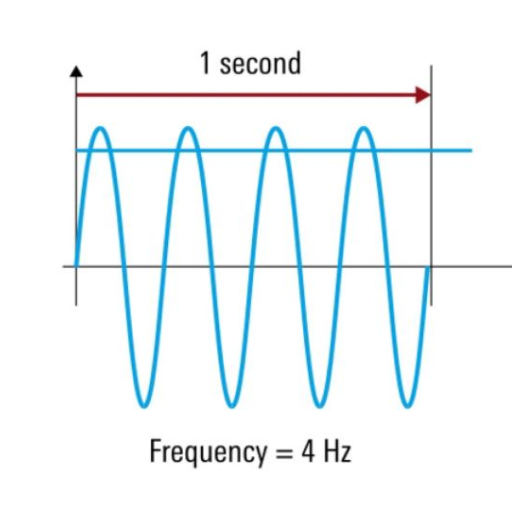
The standard frequency of 50 Hz is used in global power systems, renowned in most countries like Europe, Asia, and Africa, which have adopted this frequency. When the frequency 50 Hz is implemented correctly, the performance of electric systems can significantly improve, since most devices and electrical appliances in the mentioned areas comply with the prescribed standards and are meant to operate efficiently. Power distributors and users need to establish measures and procedures for handling frequency deviations or accidents, as even minimal changes can cause disturbances and affect sensitive devices and the grid’s performance. Modern techniques and constant surveillance play a significant role in maintaining standards in the ever-changing energy landscape, where renewable sources are driving the change.
The Characteristics of 50 Hz Frequency
Standard Frequency for Many Regions
In many parts of the globe, including Europe, Asia, and Australia, the 50 Hz frequency is widely accepted as the standard. This standard guarantees the consistency of power supply systems and the compatibility of most household and industrial equipment.
Waveform Characteristics
Electric power at 50 Hz goes through an AC process with a sinusoidal wave showing the current reversibility 50 times each second. The voltage wave follows this frequency, which makes the energy flow constant and predictable.
Voltage Compatibility
The 50 Hz system is generally supported with voltage ranges of 220-240 volts, making it very efficient and safe; consequently, such regions that adopt this standard become very conducive for electrical users. Such factors arise because power losses in transmission are minimized while effective distribution of electricity is assured.
Integration with Renewable Energy
The stability of the 50 Hz frequency is essential and presents a challenge due to the increasing renewable energy sources like solar and wind. Advanced technologies such as grid inverters and battery storage systems are then employed to harness these renewables in a manner that does not compromise the frequency.
Impact on Machinery and Devices
The efficiency of many devices, such as electric motors, transformers, and electronics, has been optimized for the 50 Hz frequency. If there are any changes in the frequency, there will be overheating, vibrations, and a risk of these systems being shut down.
Transmission and Grid Stability
A stable and constant 50 Hz is the primary frequency to be used for power plant and transmission line synchronization. Close supervision of this frequency is conducted by the grid operators since any variation in it could lead to blackouts or the destruction of delicate infrastructure.
Common Applications of 50 Hz
- Household Appliances
Almost all the appliance types used in homes, including refrigerators, washing machines, microwaves, and air conditioners, are specified for operation at 50 Hz. This not only ensures efficient operation but also enhances compatibility with the electrical grid of standard regions operating at this frequency.
- Industrial Equipment
A steady 50 Hz power supply is the best that many parts of the industry use for optimal performance, particularly in electric machines, pumps, and conveyor belt systems. This is common in cases where industries in countries with the 50 Hz standard develop their machines to align with this frequency, aiming for increased efficiency and reliability.
- Lighting Systems
Fluorescent and LED lighting setups are designed with 50 Hz in mind, which reduces the chance of flickering and helps provide constant light. The stable 50 Hz frequency also has the advantage of decreasing the rate of damage and hence, increasing the life of these lighting systems.
- Medical Devices
50 Hz is the frequency at which power supply stability is a prerequisite for imaging systems (MRI machines, CT scanners) and life-support systems in hospitals. Hence, a constant supply guarantees precision and draws no attention to patient care interruptions.
- Transportation Infrastructure
Power supply systems of the electric trains and trams fall under 50 Hz frequencies, which are the same as those of the power installations. This means that the supply of energy and the operation of the trains and trams across the networks are smooth and efficient.
- Telecommunication Equipment
Every aspect of telecommunication systems, including the internet, data centers, and transmission lines, draws from the stable 50 Hz frequency, which is the basis for power inputs needed for uninterrupted network service.
Benefits of Using 50 Hz
⚡ Energy Efficiency
The use of 50 Hz frequency by electrical systems and appliances ensures a good balance between performance and energy consumption at a very stable level. This frequency is ideal for generating and distributing power with minimal loss, making it highly energy-efficient for many applications.
💰 Cost-Effectiveness
Electric equipment operational at a 50 Hz frequency is most likely going to be readily available and widely accepted in most places which will then lead to lower manufacturing costs. Moreover, the overall cost of maintenance will be less because of the ready access to parts and professional help for this frequency.
🌍 Compatibility with Regional Power Grids
The standard power grid frequency for most countries, especially those in Europe, Asia, Africa, and some parts of South America, is 50 Hz. This way, there will be no issue when people import appliances, machines, and industrial systems since they can all connect to the existing local infrastructure. The fact that about 65% of the world’s power grids are at 50 Hz illustrates its global importance.
🏗️ Standardized Infrastructure
The 50 Hz frequency reduces the design complexity of utility systems and, consequently, the associated manufacturing processes are made more efficient and the variability of power supply infrastructures is less. This type of standardization has a positive effect on the industrial and commercial sectors because they can have the same specifications for their electrical equipment.
🔌 Optimal for Long-Distance Transmission
The use of 50 Hz frequency is particularly advantageous when it comes to long-distance power transmission since it effectively minimizes energy losses across the entire network. The energy loss through the transmission line reduction leads to a better load control and thus, the efficiency of both national and regional grids is increased.
♻️ Compatibility with Renewable Energy
Renewable energy systems like hydroelectric, wind, and solar power can be effortlessly plugged into 50 Hz grids. This can be supported variously by the world’s eco-friendly energy requirements, so that 50 Hz can be considered a solid and reliable alternative for today’s power supply of renewable energy infrastructures.
60 Hz Frequency Overview
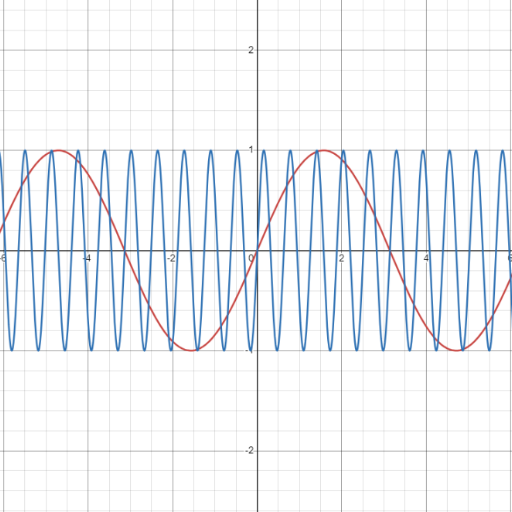
The frequency of 60 Hz is predominant in most of the United States, Canada, and specific areas of South America. This frequency selection can be attributed to their power grid and the development of their electrical systems. One of the most significant advantages of this frequency is the increased output in systems using motors, as motors operating at 60 Hz usually attain higher speeds and production. In addition, 60 Hz systems are upgraded to manage high voltage levels, enabling them to distribute power over shorter distances effectively. The integration of renewable energy in 60 Hz grids is facilitated, but the choice of this frequency is still mainly based on the area and past practices.
Characteristics of 60 Hz Frequency
Higher Rotational Speeds
The higher rotational speed of motors operating at a 60 Hz frequency is one reason their efficiency increases in many applications compared to motors at lower frequencies.
Efficiency in Power Transmission
The 60 Hz supply can handle higher voltage levels, making the resulting system more compact and less vulnerable to power loss as it distributes power over shorter distances.
Compatibility with Household Appliances
Electrical appliances in residences and businesses in areas using 60 Hz are usually manufactured for this frequency, so the appliances can perform well and have longer lives.
Voltage Standards
The 60 Hz power systems are directly correlated with the regional voltage standards that are usually 120 or 240 volts. Hence, North America has a stable voltage supply for all sorts of applications.
Integration of Renewable Energy Sources
The integration of renewables like solar or wind into a 60 Hz grid can be achieved with modern inverters and grid synchronization technologies that are specifically tailored for this frequency.
Reduced Flicker in Lighting
The adoption of the 60 Hz frequency results in practically no visible flickering in fluorescent and LED lights, thus providing better comfort and less eye strain.
Common Applications of 60 Hz
- Household Appliances
The majority of electric devices in areas operating on a 60 Hz basis depend on this frequency for their smooth and effective functioning. This includes refrigerators, washing machines, and air conditioners, all designed to work perfectly with the 60 Hz grid, thus gaining the benefits of availability and longer life.
- Telecommunications Equipment
The telecommunication sector uses 60 Hz as the frequency to ensure stability for monitoring and controlling equipment, including switches, routers, and data centers. The frequency’s stability prevents interruptions in communication and data flow.
- Industrial Machinery
The list of industrial equipment and machinery includes almost all that are designed to work with the 60 Hz frequency to ensure reliable motor performance. Conveyor belts, pumps, and robots in manufacturing are all supported by the standard frequency for the continuous operational speeds that are required of them.
- Power Grids Across the Americas
Areas in North America, along with parts of South America, namely the US, Canada, and Brazil, are the main users of the 60 Hz frequency in their electricity networks. The standard thus established makes it much easier to connect the equipment and exchange electricity among neighboring regions.
- Public Transport Systems
Electricity-powered public transport services, including metros and trains, frequently opt for 60 Hz as the electricity source since it allows the motors and safety systems to function smoothly without hiccups.
- Medical Equipment
Hospitals and clinics that require the calibration of their equipment to 60 Hz often display high-tech imaging machines like MRIs and CTs, along with life-support systems. The stable frequency is a crucial factor in accurate diagnostics and the delivery of life-saving medical care.
Benefits of Using 60 Hz
📊 Standardization Across Systems
The 60 Hz power frequency is used to support the standardization of electrical systems across regions like North America and parts of South America. This standardization promotes the development, manufacturing, and compatibility of electronic gadgets, thus leading to a decrease in the price and a more efficient operation of the electrical industry.
⚡ Efficient Power Transmission
The 60 Hz frequency power supply is capable of transmitting electricity very efficiently over long distances. The frequency provides a compromise between energy losses and grid performance, allowing very little inefficiency in transmission. Thus, end users receive a very reliable supply.
🔧 Improved Motor Performance
The design of most electric motors is centered on the 60 Hz frequency, which provides catalytic converters and other equipment with smoother functionality and higher efficiency. The manufacturing industry, in particular, experiences vast benefits from this as its motor-driven equipment relies mainly on the stability of power for ensuring consistency in output. For example, induction motors working at this frequency produce less heat, making them less subject to wear and tear and resulting in longer life-spans.
💡 Reduced Flickering in Lighting Systems
In addition to higher efficiency, the power of 60 Hz also results in minimum flickering lights, for example, in fluorescent lighting, which leads to better visual comfort in places like homes, offices, and public areas. Apart from the positive impact on human activity in such areas, night-time blindness is also worry-free as a result of the reduced risk of eye strain.
⏰ Accurate Timing Mechanisms
The constant 60 Hz frequency is what is relied on by clocks and timing-dependent gadgets to maintain timing precision. The industries most affected are telecoms and broadcasting, which heavily rely on synchronization; therefore, the timing of their operations is dictated by the frequency.
🔌 Compatibility with Modern Electronics
In areas where the 60 Hz frequency is used, most modern electronic devices and household appliances are designed to be compatible with it and thus work efficiently. Such devices include refrigerators, air conditioners, and washing machines that don’t need any extra converters or adjustment valves for their optimal performance.
Comparing 50 Hz and 60 Hz
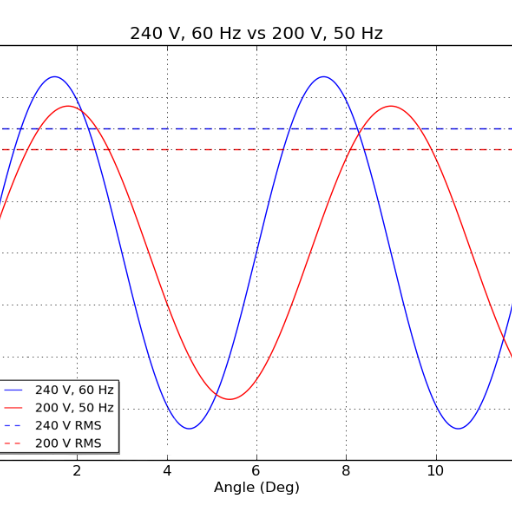
Key Comparison Factors
Energy Efficiency
All the same, electrical equipment operating at 60 Hz is more energy-consuming than the 50 Hz system because it draws slightly less current for the same power output.
Motor Performance
In the case of 60 Hz motors, they run faster than 50 Hz motors, leading to quicker operation but also higher wear and tear. On the other hand, 50 Hz motors are considered to be more robust and quieter in operation than motors with different speed characteristics.
Regional Applications
In the meantime, Europe, Asia, and parts of Africa mainly utilize 50 Hz, whereas North America and some parts of South America have switched to 60 Hz. Ultimately, this would be the supply and demand situation of the different regions that have electricity with varying frequency standards.
Equipment Compatibility
Using devices that are not made for a specific frequency can result in inefficiencies or malfunctions. For instance, a motor designed for 60 Hz will certainly get hot or perform poorly if connected to a 50 Hz system, and vice versa.
Detailed Comparison Table
| Parameter | 50 Hz | 60 Hz |
|---|---|---|
| Geographic Use | Europe, Asia, Africa | North and parts of South America |
| Power Generation Efficiency | Slightly less efficient | More efficient |
| Motor Speed (RPM) | Lower (e.g., 3000 for 2-pole motor) | Higher (e.g., 3600 for 2-pole motor) |
| Transmission Loss | Higher | Lower |
| Equipment Size | Larger | Smaller |
| Noise Levels | Lower | Higher |
| Lamp Flicker Visibility | Occasional (older equipment) | Less noticeable |
| Transformer Cost | Higher | Lower |
| Compatibility Issues | Common (switching required) | Minimal in native regions |
| Overall System Stability | Slightly less stable | More stable |
Note: Table is responsive and will scroll horizontally on smaller screens
Choosing Between 50 Hz and 60 Hz
The selection of either 50 Hz or 60 Hz systems does not solely rely on the power frequency but instead on the specific conditions of the usage environments and the operational requirements. In industrial applications, where the focus is mainly on efficiency and the equipment is smaller, 60 Hz systems, due to their smaller motor and higher speed, are usually preferred. In contrast, 50 Hz systems have become the standard in areas where their infrastructure has developed for quite a long time. They could be considered less disruptive and more stable in the long run if noise is prioritized.
The local grid system compatibility is another crucial factor. Different frequencies of electrical equipment can be made to work in regions with other standards, but this requires modification or power transformers, making the process costly and complex for the user. Also, users need to assess the expenses of transformers and installation first, as these costs can differ depending on the frequency of use. The frequency choice ultimately relies on a mixture of factors, i.e., geographic standards, exact application needs, cost considerations, and the effectiveness of long-term operational efficiency.
Effects of Frequency on Magnetic Fields
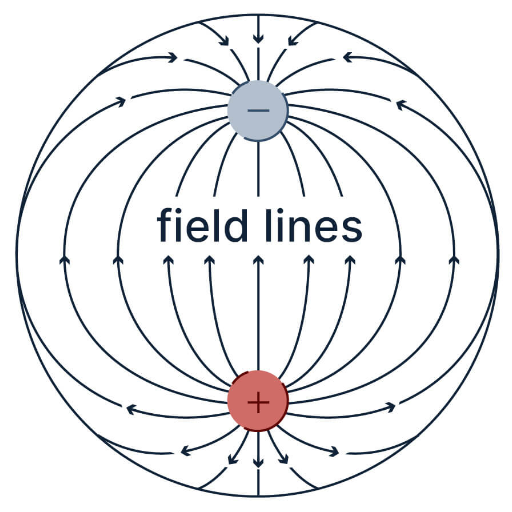
The frequency determines not only the behavior but also the strength of the magnetic fields. Each higher frequency leads to the occurrence of very quickly changing magnetic fields, thus causing a greater energy loss through eddy currents and hysteresis if the magnetic materials are involved. On the contrary, lower frequencies generate more stable magnetic fields that have lower energy losses. The frequency also affects how deep the magnetic field can penetrate conductive materials, with lower frequencies allowing deeper penetration. This connection makes frequency selection a crucial factor for transformers, motors, and inductive coupling, as it ties efficiency and performance to effective management of the magnetic field behavior.
How Frequency Affects Magnetic Fields
Magnetic fields’ frequency impact is a significant consideration across multiple sectors. For instance, in the power sector, the alternating current (AC) operates at 50 Hz or 60 Hz frequencies, ensuring energy compatibility and effectiveness in transmission. Communication often employs higher frequencies, as it allows transmission of vast amounts of data through limited bandwidths. However, low frequency facilitates penetration in applications like medical imaging (e.g., MRI) or geological surveys.
Moreover, in high-frequency power electronics, precise frequency control is required for devices like inverters and converters to perform at their best and avoid heat and energy losses. The invention of advanced ferrites for high-frequency transformers, driven by material sciences, is one of the strongest pieces of evidence for frequency management as a direct factor in energy efficiency and system reliability. Understanding the complex interaction between frequency and magnetic fields is essential for advancing technology and optimizing performance across various engineering fields.
Future of Power Systems and Frequency Standards
The trend of the power systems is moving towards being more efficient, reliable, and green. The maturation of innovative grid technologies is leading to more efficient energy distribution through the integration of renewable energy sources like solar and wind. The grids make use of predictive analytics, real-time monitoring, and decentralized networks to optimize power generation and minimize waste.
Standardization of frequency has also entered a phase of rapid change, especially with the invention of optical atomic clocks. Such clocks, which surpass traditional cesium-based atomic clocks in performance, have unparalleled accuracy. This degree of precision is necessary for an array of uses, including telecommunications, navigation, and research. The world of power systems is becoming more intricate; hence, frequency regulation and synchronization remain robust and adaptable to variations in power demand due to these advancements.
The collaboration among governments, industries, and research centers not only leads to discoveries but also adheres to the world’s top standards. The future of power systems and frequency standards hinges on the combined efforts of environmental conservation and technological innovation, enabling them to satisfy the gradually increasing global energy demand.
Reference Sources
Investigative Study on the Properties of Magnetic Materials for Electrical Machines
Key Findings: This study explores the performance of magnetic materials at different frequencies, including 50Hz. It highlights the benefits of 50Hz in terms of core loss, BH curve, and permeability, which are critical for optimizing electrical machine designs.
Altering Supply Frequency to Prevent the Theft of Electric Power at Distribution End
Key Findings: This paper discusses the advantages of maintaining a standard 50Hz frequency for electricity distribution. It emphasizes the role of 50Hz as a “healthy frequency” for efficient power supply and theft prevention.
Frequently Asked Questions (FAQs)
❓ What are the advantages and disadvantages of 50 Hz frequency?
The 50 Hz frequency operation has been a game-changer. Among other things, the cost of materials for both transformers and motors will be less because the amount of power they have to handle will be smaller, reducing the weight of the earth as well. This power frequency is so widespread across many countries, particularly in Europe and other regions, that connection through several electrical systems is possible. Nevertheless, there are some shortcomings since 50 Hz could entail higher losses and less efficiency in some cases where high-speed operation is a must. Additionally, the use of 50 Hz machines in areas where 60 Hz is predominant might result in voltage drop and power quality problems. In terms of size, 50 Hz is generally considered a good frequency for reducing equipment size, but it is not always the best choice.
❓ How does the 50 Hz frequency compare to the 60 Hz frequency?
One of the main characteristics that differ between 50 Hz and 60 Hz frequencies lies in the energy transmission efficiency. Typically, 60 Hz appliances have been reported as much more efficient operators than their 50 Hz counterparts in the majority of cases. Nevertheless, in the case of 50 Hz, the frequency not only allows but also promotes the manufacture of compact transformers and devices simultaneously, making it a win-win situation for both installation and operating costs. Moreover, in the US, 60 Hz has been the official frequency, while 50 Hz is not illegal. However, the issue of using American 50 Hz specialized equipment in the American continental areas is another side of the coin. Additionally, the skin effect on conductors, resulting from the wave-like nature of frequencies, may be at different stages; this, in fact, will lead to different power losses, with distorted harmonics being the two central issues of concern.
❓ What is the impact of using 50 Hz frequency on electrical equipment?
The application of a 50 Hz frequency has a decisive influence on the performance of electrical equipment. A 50 Hz unit typically operates within the same frequency range, thus providing the best performance for motors and generators. But if that equipment is operating in a 60 Hz system, it could experience higher temperatures and lower efficiency due to the increased speed of operation. Besides, specific timing-dependent applications may not work correctly at 50 Hz. As there are smaller and lighter units that can be built with 50 Hz frequency, system compatibility should be checked to prevent power disruptions and increased losses. It is the knowledge of the specific needs of the equipment that will determine the success of the operation at 50 Hz frequency.
❓ Are there specific applications where a 50 Hz frequency is more beneficial?
Definitely, a frequency of 50 Hz is an extreme advantage in the case of industrial machines and large power plants. The smaller and lighter equipment resulting from the 50 Hz is due to the design of motors and generators, as well as the power plant side. Moreover, in places where 50 Hz is standard, for example, in European countries, this frequency is the first to be utilized by local electrical supplies. But one must consider the needs of particular devices because the lower frequency might slow operations, and thus the device would perform better at 60 Hz. To conclude, the frequency selection should be based not only on the application but also on the system’s compatibility.
